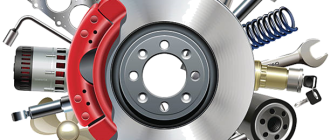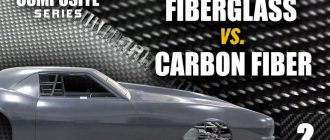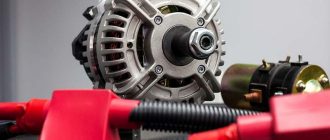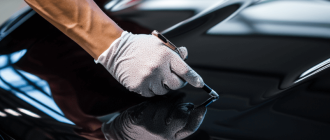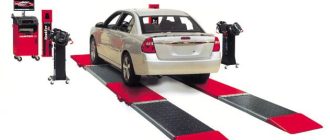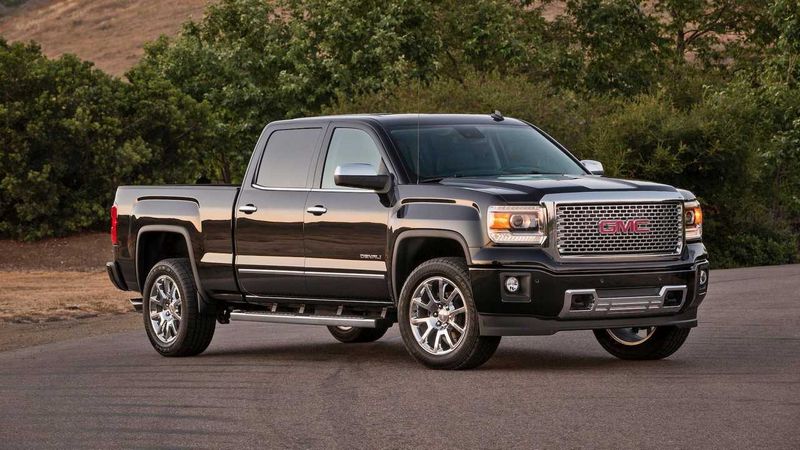
What Are Certified Pre-Owned Cars and How Are They Restored?
In the world of car buying, pre-owned vehicles are a popular choice. They offer a more affordable option compared to new cars, while still being able to provide reliability and functionality. However, not all pre-owned cars are the same. Some have undergone a restoration process to ensure they meet specific standards of quality and performance. These are known as certified pre-owned cars, and understanding how and what they are restored can help potential buyers make informed decisions.
Certified pre-owned cars are vehicles that have been inspected, repaired, and restored by authorized dealerships or manufacturers. This certification process typically includes a comprehensive inspection of the vehicle’s mechanical components, electrical systems, and overall condition. Any necessary repairs or replacements are made to ensure the car meets specific criteria set by the manufacturer. This process often includes using genuine parts and following stringent guidelines to restore the car to its original condition.
One of the key benefits of certified pre-owned cars is the assurance they provide to buyers. These vehicles come with warranties, which can vary in duration and coverage depending on the manufacturer. These warranties offer peace of mind that the car has been restored to a high standard and will continue to perform well. In addition, certified pre-owned cars often come with additional perks such as roadside assistance and maintenance plans, further enhancing their value.
So, what sets certified pre-owned cars apart from other pre-owned vehicles? The restoration process is the main differentiating factor. While regular pre-owned cars are sold as-is, certified pre-owned cars undergo a thorough restoration process to ensure they are in top condition. This process not only improves the car’s performance and reliability but also extends its lifespan. By purchasing a certified pre-owned car, buyers can enjoy the benefits of owning a high-quality vehicle at a more affordable price.
What Are Certified Pre-Owned Cars?
Certified pre-owned cars are vehicles that have been previously owned by someone else but have undergone a thorough inspection and refurbishment process to ensure they meet certain quality standards. These cars are typically sold by authorized dealerships and come with additional benefits, such as extended warranties and roadside assistance.
What sets certified pre-owned cars apart from regular used cars is the certification process. This process includes a comprehensive inspection carried out by trained technicians who carefully examine the car’s mechanical, electrical, and cosmetic aspects. Any issues found during the inspection are repaired or replaced using genuine parts to restore the car to its optimal condition.
Not all pre-owned cars can be certified. To be eligible for certification, a car generally needs to meet certain requirements, such as being a recent model year, having a limited number of miles on the odometer, and having a clean title history. Additionally, the car must pass the dealership’s inspection checklist, which may vary among manufacturers and dealerships.
So, how are certified pre-owned cars different from regular used cars? The certification process gives buyers added peace of mind, knowing that the car they are purchasing has undergone a thorough inspection and has been restored to a high standard. This assurance can be especially valuable when buying a used car, as it reduces the risk of unexpected repairs or hidden problems.
Overall, certified pre-owned cars offer an attractive option for buyers looking for a quality used car with additional benefits. If you’re in the market for a car and want the reassurance of a thorough inspection and certification process, a certified pre-owned car may be the right choice for you.
Benefits of Buying Certified Pre-Owned Cars
When it comes to purchasing a used car, certified pre-owned cars offer several benefits that make them a popular choice among buyers. Here is a look at some of the advantages of buying certified pre-owned cars:
- Peace of mind: Certified pre-owned cars go through a rigorous inspection process, ensuring that they meet high-quality standards. This gives buyers peace of mind, knowing that they are purchasing a reliable vehicle.
- Warranty protection: Certified pre-owned cars often come with extended warranties, offering additional protection beyond the original manufacturer’s warranty. This can provide buyers with coverage for unexpected repairs or mechanical issues.
- Assurance of quality: Certified pre-owned cars are thoroughly inspected and restored to their original condition. This restoration process involves addressing any mechanical or cosmetic issues, ensuring that the car is in excellent shape before being certified.
- Vehicle history report: Certified pre-owned cars come with a detailed vehicle history report, providing information about the car’s past ownership, maintenance records, and any accidents or damages it may have incurred. This transparency helps buyers make an informed decision.
- Financing options: Many dealerships offer special financing options for certified pre-owned cars, making them more accessible to buyers. These financing options may include lower interest rates or flexible payment plans.
Overall, buying a certified pre-owned car can offer significant advantages over purchasing a regular used car. The certification process, warranty protection, assurance of quality, vehicle history report, and financing options all contribute to making certified pre-owned cars a reliable and attractive choice for buyers.
Selection Process for Certified Pre-Owned Cars
When it comes to buying a car, many consumers prefer certified pre-owned options. But what exactly are certified pre-owned cars and how are they selected?
Certified pre-owned cars are vehicles that have been previously owned and then restored to like-new condition by the manufacturer or an authorized dealership. These cars undergo a thorough inspection process to ensure that they meet a set of specific criteria.
The selection process for certified pre-owned cars involves several steps:
- Inspection: Before a car can be considered for certification, it must undergo a comprehensive inspection. This inspection includes a detailed examination of the vehicle’s mechanical and electrical systems, as well as its exterior and interior condition. Any necessary repairs or replacements are made to bring the car up to standard.
- Vehicle History Report: A certified pre-owned car must have a clean vehicle history report. This report provides information about the car’s previous ownership, accidents, and any major repairs or recalls.
- Mileage Limit: Most certified pre-owned programs have a mileage limit, typically ranging from 50,000 to 100,000 miles. Cars that exceed this limit are usually not eligible for certification.
- Age Limit: There is also an age limit for certified pre-owned cars. Generally, cars that are more than a few years old are not eligible for certification.
- Warranty and Maintenance: Certified pre-owned cars come with extended warranties and additional maintenance benefits. These warranties provide peace of mind to buyers, as they cover certain repairs and services for a specified period of time or mileage.
By going through this selection process, certified pre-owned cars are able to offer buyers a reliable and high-quality option that is often more affordable than buying a brand new car. So, if you’re in the market for a car, consider exploring the certified pre-owned options available to you.
Inspection of Certified Pre-Owned Cars
When considering the purchase of a pre-owned car, it’s important to understand the inspection process that these cars go through before they are certified and made available for sale. This inspection is a crucial step in ensuring the quality of the vehicle and the restoration process it undergoes.
So, what exactly happens during the inspection of certified pre-owned cars? Here’s how it works:
| Step 1: | The cars are thoroughly checked from both a mechanical and cosmetic standpoint. Trained technicians inspect the engine, transmission, brakes, tires, and other critical components to ensure they are in good working condition. |
| Step 2: | The cars are carefully examined for any signs of previous accidents or damage. This includes checking the body panels, doors, fenders, and other exterior parts for any indications of repairs or paintwork. |
| Step 3: | A detailed inspection of the interior is conducted to ensure that all the features and functions are working properly. This includes checking the seats, dashboard, electronics, and any other interior components. |
| Step 4: | The cars are put through a rigorous road test to evaluate their performance and handling. This helps identify any potential issues with the suspension, steering, and overall drivability. |
| Step 5: | Finally, a comprehensive review of the vehicle’s history and service records is conducted to ensure its authenticity and verify that it has been properly maintained. |
Once the inspection is complete, the cars are restored as necessary to meet the standards set by the manufacturer or certification program. This may involve replacing any faulty components, performing necessary repairs, and conducting thorough detailing to enhance the appearance of the vehicle.
By understanding the inspection process, consumers can have confidence in the quality of certified pre-owned cars. It also serves as a way for dealerships to differentiate themselves and provide peace of mind to buyers. So, the next time you’re in the market for a pre-owned car, be sure to ask about the inspection and restoration process to ensure you’re getting a reliable and well-cared-for vehicle.
Understanding the Restoration Process
When it comes to certified pre-owned cars, understanding the restoration process is crucial. Restoration is the process of bringing a used car back to its original condition or making necessary repairs to ensure its functionality and safety. This is done to meet the high standards set by the certification program.
Restoration begins with a thorough inspection of the car. Trained technicians examine every aspect of the vehicle to identify any issues or areas that require attention. They check the engine, transmission, brakes, suspension, and all other mechanical components. They also inspect the body for any signs of damage or previous repairs.
Once the inspection is complete, the restoration process begins. This can involve repairing or replacing parts, repainting the exterior, or addressing any cosmetic imperfections. The goal is to restore the car to its original condition, both aesthetically and mechanically.
The certified pre-owned cars go through a rigorous restoration process to ensure they meet specific standards. These standards guarantee that the vehicle is safe, reliable, and free from major defects. It also assures that the car will provide a satisfying driving experience for the new owner.
| 1. Thorough inspection of the car |
| 2. Identifying and addressing any issues or areas of concern |
| 3. Repairing or replacing necessary parts |
| 4. Repainting the exterior or addressing cosmetic imperfections |
| 5. Ensuring the car meets specific standards set by the certification program |
Understanding how the restoration process works is important for buyers of certified pre-owned cars. It gives them confidence that the car they are purchasing has undergone a comprehensive evaluation and restoration, guaranteeing its quality and reliability.
Why is Restoration Important?
Restoration is an essential process when it comes to certified pre-owned cars. It is important because it ensures that these cars are brought back to their original condition before being offered for sale. A restored car goes through various steps and procedures to fix any issues it may have had, both mechanically and aesthetically.
When a pre-owned car is restored, it goes through a thorough inspection to identify any damage or wear. The necessary repairs are then made by skilled technicians, ensuring that the car is not only safe to drive but also performs optimally. This includes fixing or replacing components such as the engine, transmission, brakes, suspension, and electronics.
Restoration also involves addressing any cosmetic imperfections, such as scratches, dents, or faded paint. The car may undergo a professional detailing process to bring back its showroom shine. This attention to detail not only enhances the car’s appearance but also increases its resale value.
In addition, restoration can uncover hidden issues that may not have been visible during the initial inspection. These issues can be addressed and resolved, providing peace of mind to the future owner. This level of transparency and quality assurance is a significant advantage of purchasing a certified pre-owned car.
In summary, restoration is important in the certified pre-owned car industry because it ensures that these cars are thoroughly inspected, repaired, and restored to their original condition. This process enhances the car’s performance, appearance, and overall value, making it a reliable and attractive option for buyers.
Restoration Techniques and Methods
When it comes to certified pre-owned cars, one important aspect to understand is how they are restored. Restoration involves a variety of techniques and methods to bring the vehicle back to its original condition.
Certified pre-owned cars go through a thorough inspection process to identify any issues or problems. Once identified, these issues are then addressed and repaired by trained professionals. The restoration process aims to ensure that the car meets the necessary standards and is in excellent condition.
Restoration techniques can vary depending on the specific car and its condition. One common restoration method is repairing or replacing damaged parts. This can include fixing or replacing engine components, body panels, or interior features.
Another important restoration technique is painting. This involves sanding, priming, and applying multiple layers of paint to achieve a seamless finish. The goal is to restore the car’s original color and provide a flawless appearance.
In addition to repairs and painting, the restoration process may also involve reupholstering the interior. This can include repairing or replacing seats, carpets, and headliners to ensure a fresh and comfortable interior.
It is also important to note that the restoration process takes into consideration the car’s history. For example, if a car has been involved in an accident, the restoration process will include thorough repairs to ensure the structural integrity of the vehicle.
Overall, certified pre-owned cars undergo a comprehensive restoration process to bring them to an excellent condition. Various techniques and methods, such as repairs, painting, and reupholstering, are used to restore the car’s appearance and functionality. This ensures that buyers can have confidence in the quality and reliability of their certified pre-owned vehicle.
The Role of Certified Technicians
When it comes to pre-owned cars, understanding how they are certified and what the restoration process entails is crucial. Certified technicians play a crucial role in this process.
Certified technicians are highly trained professionals who have gone through extensive training and have received certification in their respective fields. They are experts in inspecting, diagnosing, and restoring pre-owned cars to ensure they meet the standards set by the certification program.
These technicians work diligently to examine every aspect of the pre-owned vehicle, from the engine to the exterior and interior components. They have an in-depth understanding of the mechanical and electrical systems of various car models, allowing them to detect any potential issues that may require attention.
Once the certified technicians identify any problems, they begin the restoration process. They carefully repair or replace faulty parts, ensuring that the car is in optimal condition. This includes fixing mechanical issues, addressing cosmetic flaws, and ensuring that all safety features are in proper working order.
The restoration process also involves a comprehensive inspection, where the technicians test drive the vehicle to verify its performance and functionality. This step ensures that the car is not only restored but also meets the standards of a certified pre-owned vehicle.
It’s important to highlight that certified technicians are equipped with specialized tools and equipment specific to the restoration and maintenance of pre-owned cars. Their expertise and attention to detail ensure that the vehicles are restored to a like-new condition, both aesthetically and mechanically.
In conclusion, certified technicians play a critical role in the certification process for pre-owned cars. Their expertise and knowledge allow them to thoroughly inspect, diagnose, and restore vehicles to meet the high standards set by the certification program. Whether it’s repairing mechanical issues or addressing cosmetic flaws, these technicians work diligently to ensure that certified pre-owned cars are restored and ready for the road.
Quality Assurance in the Restoration Process
When it comes to certified pre-owned cars, quality assurance is an essential aspect of the restoration process. To understand what certified, restored, and pre-owned mean and how they are related, it is important to examine the restoration process itself.
Certified pre-owned cars are vehicles that have been thoroughly inspected, restored, and certified by a manufacturer or a certified dealership. This certification ensures that the car meets certain quality standards and is in excellent condition. Therefore, the restoration process is crucial in achieving this level of assurance.
Restoration involves a comprehensive evaluation of the vehicle’s condition, including its mechanical, electrical, and aesthetic components. Skilled technicians perform necessary repairs and replacements to ensure that the car is brought back to its original state or even improved.
The restoration process typically includes tasks such as engine tuning, brake system repair, electrical system inspection and repair, interior detailing, exterior painting, and bodywork. These steps aim to address any existing issues and enhance the overall performance and appearance of the vehicle.
During the restoration process, strict quality control measures are implemented to ensure that each task is performed accurately and according to the manufacturer’s standards. Technicians follow specific guidelines and use high-quality materials and parts to guarantee the longevity and reliability of the restored car.
Additionally, certified pre-owned cars undergo a thorough inspection after the restoration process is complete. This final evaluation ensures that the vehicle meets all the necessary standards and requirements to be considered certified and ready for sale.
In summary, quality assurance plays a vital role in the restoration process of certified pre-owned cars. Through meticulous evaluation, repair, and inspection, these vehicles are restored to high standards, providing reassurance to potential buyers about their quality and condition.
Warranty for Certified Pre-Owned Cars
When purchasing a pre-owned car, it is natural to have concerns about the condition and potential issues that may arise. This is where certified pre-owned cars and their warranties come into play.
So, how do these warranties work for certified pre-owned cars, and what exactly do they cover?
Certified pre-owned cars are vehicles that have undergone a thorough inspection and restoration process before being offered for sale. This process ensures that any mechanical and cosmetic issues are addressed and resolved by trained professionals.
As a result, buyers can have peace of mind knowing that they are purchasing a car that has been restored to a high standard of quality. But what about the warranty?
The warranty for certified pre-owned cars varies depending on the manufacturer and dealership. However, it typically provides coverage for a specific duration or mileage, whichever comes first.
These warranties often cover major components such as the engine, transmission, and drivetrain. It may also include additional benefits such as roadside assistance, trip interruption coverage, and rental car reimbursement.
It’s important to note that certified pre-owned car warranties generally do not cover regular wear and tear, routine maintenance, or items such as tires and brakes. Additionally, any modifications or aftermarket parts may void the warranty.
When purchasing a certified pre-owned car, it is crucial to carefully review and understand the warranty terms and limitations. This will help ensure that you are aware of what is covered and what is not, allowing you to make an informed decision.
In conclusion, certified pre-owned cars go through a rigorous restoration process and come with warranties to provide buyers with added assurance. These warranties typically cover major components and may offer additional benefits. However, it is important to review the warranty terms and limitations before making a purchase.
Questions and answers:
What are certified pre-owned cars?
Certified pre-owned cars are used cars that have undergone a thorough inspection and restoration process by the manufacturer or an authorized dealer. They come with a warranty and often additional benefits, giving buyers more confidence in their purchase.
How does the restoration process for certified pre-owned cars work?
The restoration process for certified pre-owned cars involves a comprehensive inspection of the vehicle to identify any issues or damage. If any problems are found, they are repaired or replaced using genuine parts, ensuring the car is brought back to a like-new condition. The process also includes detailing the car to make it look as good as new.
What are the benefits of buying a certified pre-owned car over a regular used car?
Buying a certified pre-owned car offers several advantages over a regular used car. First, these cars have undergone a thorough inspection and restoration process, giving buyers peace of mind that the car is in good condition. Second, they often come with a warranty, providing additional protection and coverage. Finally, certified pre-owned cars may also come with additional benefits like roadside assistance or special financing options.
Are certified pre-owned cars more expensive than regular used cars?
Generally, certified pre-owned cars are priced higher than regular used cars. This is because they have undergone a thorough inspection and restoration process, and often come with additional benefits like a warranty. However, the higher price is often justified by the added peace of mind and confidence that comes with buying a certified pre-owned car.
Can any car be certified pre-owned?
No, not every used car can be certified pre-owned. The certification process is typically only available for cars that meet certain criteria set by the manufacturer or dealer. These criteria often include factors like age, mileage, and condition of the car. Only cars that meet these requirements and pass the rigorous inspection process can be certified pre-owned.
What is the restoration process for certified pre-owned cars?
The restoration process for certified pre-owned cars involves a thorough inspection and any necessary repairs or reconditioning to bring the vehicle up to a designated standard set by the manufacturer or dealership.

